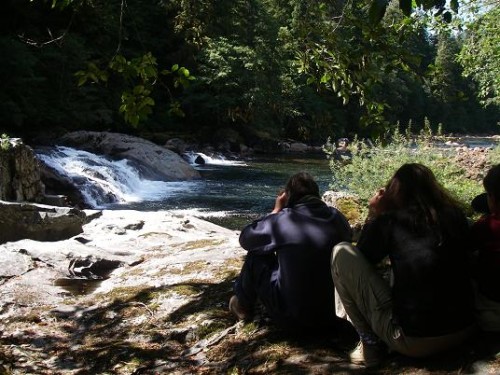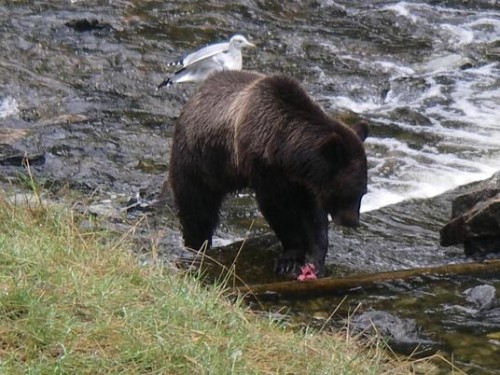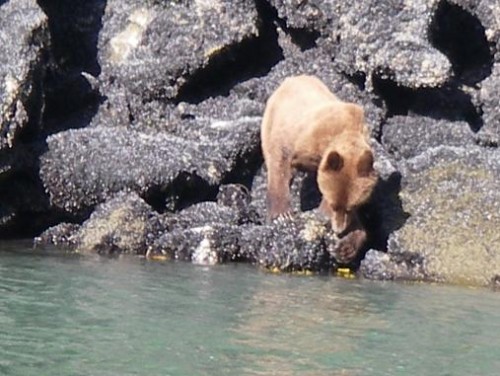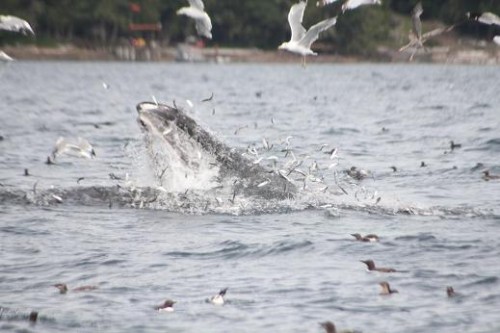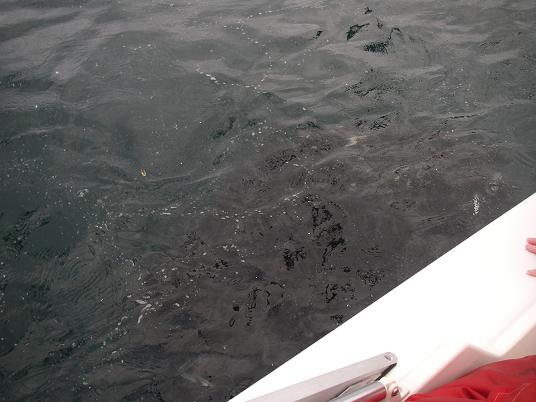
….the second is the bear with a salmon in its mouth. Note: I used (Pentax Optio Wpi 6MP and 3X Optical Zoom) that does not have a great zoom feature but I know the guests got great pictures. It is an interesting sensation watching a grizzly when the river is not that deep and the bear could cross without much effort. And even though Rick knows the grizzlies and has spent twenty years on the river he is still armed and prepared.
